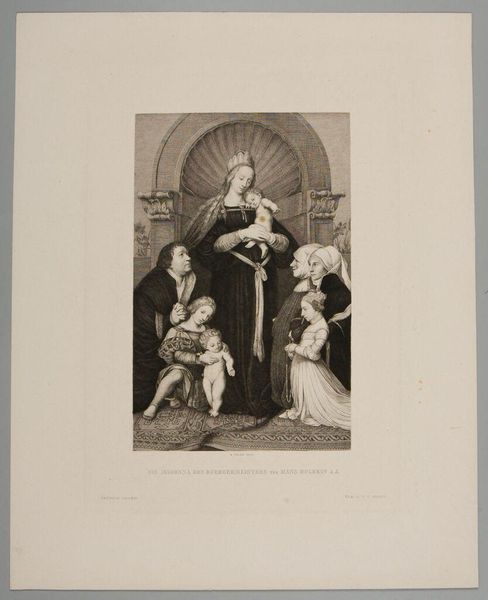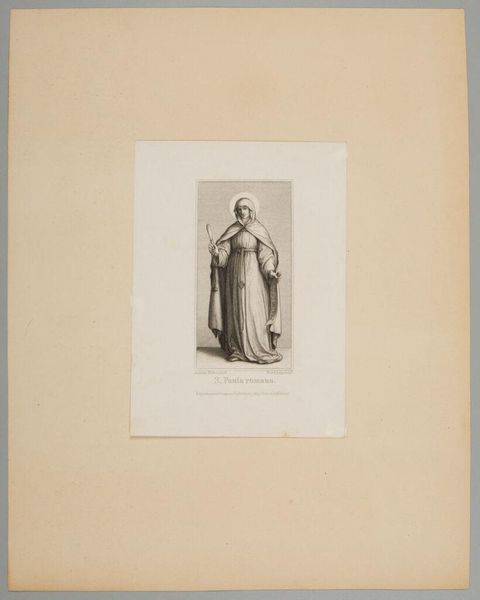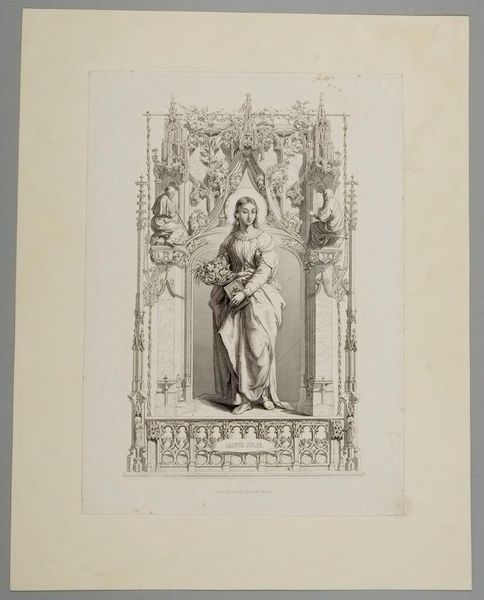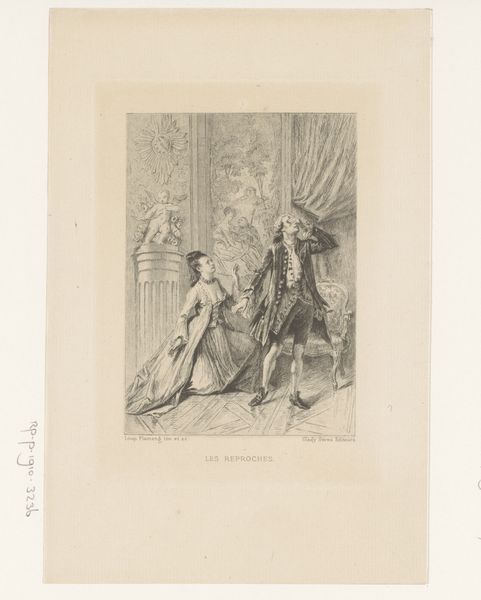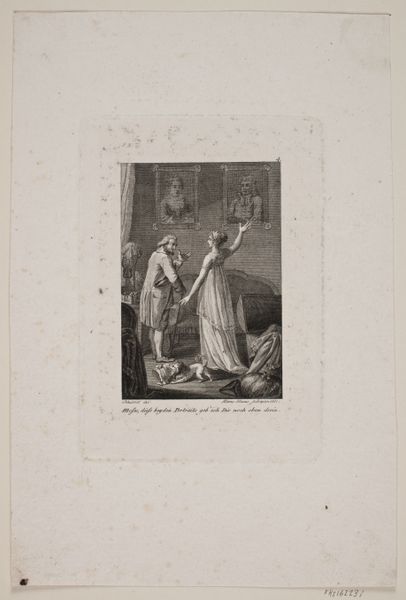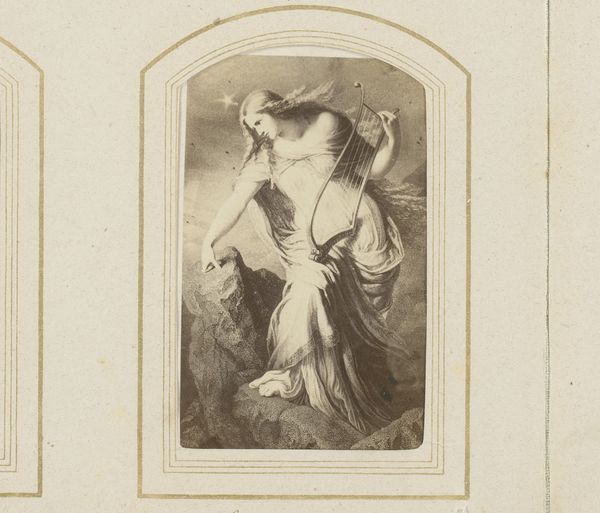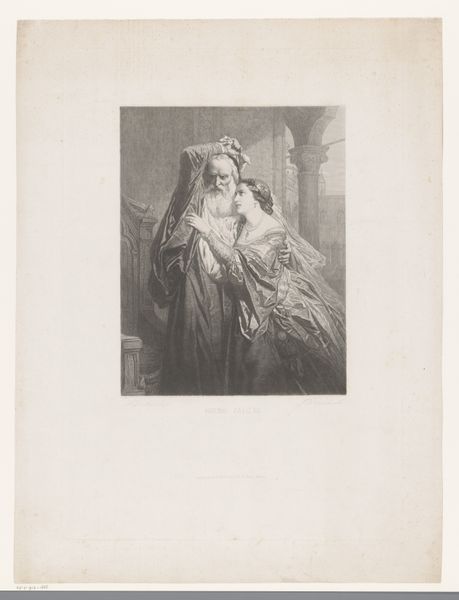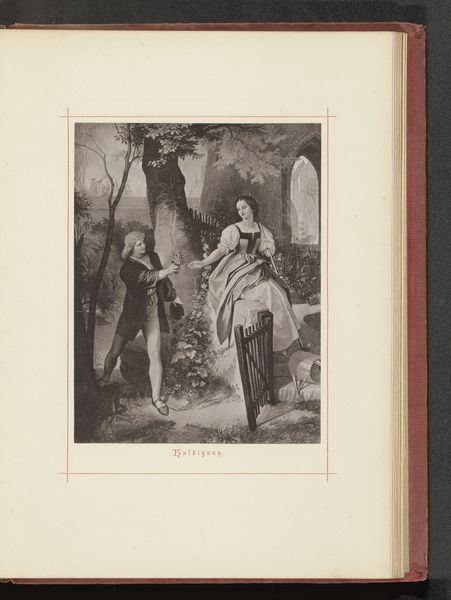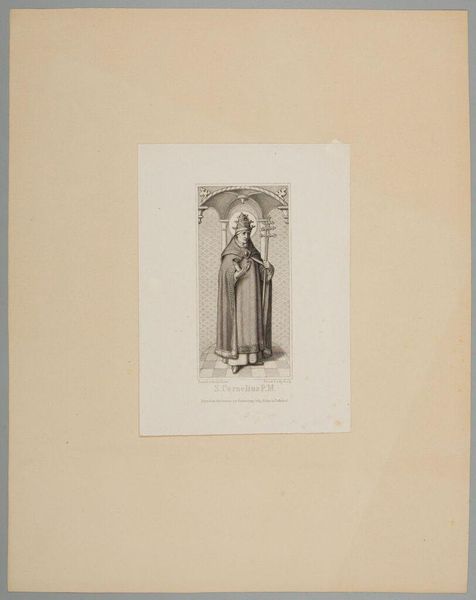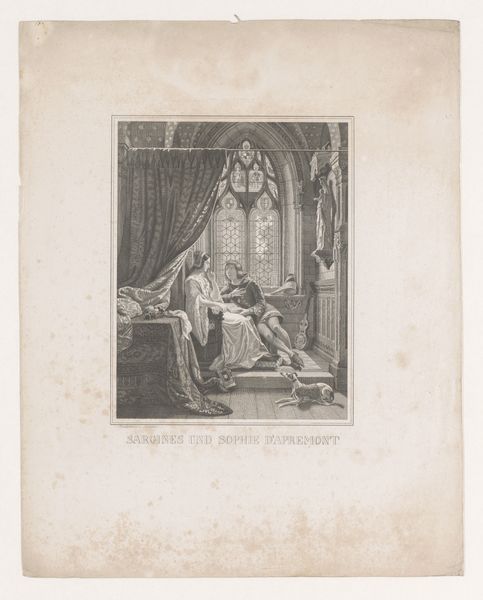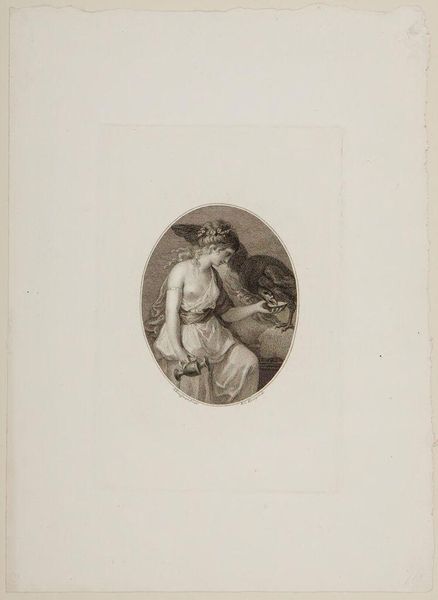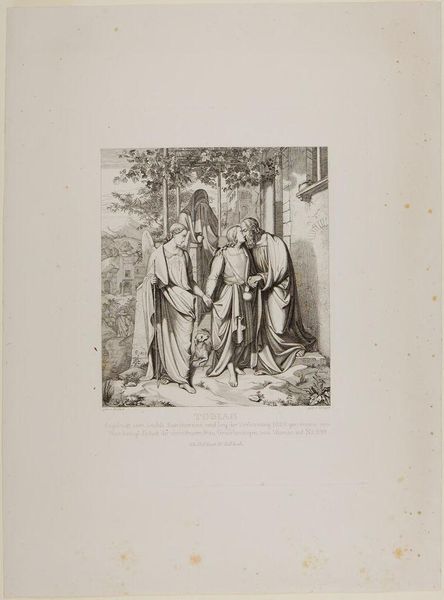
Copyright: CC0 1.0
Curator: This is Friedrich August Ludy’s “Saint Elizabeth,” residing here at the Harvard Art Museums. The exact date is unknown, but it presents a fascinating study in social dynamics. Editor: It feels deeply melancholic. The child clings to Elizabeth's skirt, the nobleman averts his eyes. What’s in her apron—flowers? Or something more valuable, perhaps? Curator: Those flowers, according to legend, are actually bread. Elizabeth, known for her charity, defied her husband by giving away bread to the poor. When confronted, the bread miraculously transformed into roses. Editor: Ah, roses—symbols of love, but also sacrifice. The image speaks to the tension between earthly power and divine compassion, reflected in the stark contrast between the nobleman’s attire and Elizabeth’s simple garb. Curator: And the means of production! Ludy’s meticulous printmaking emphasizes the reproductive capabilities—allowing for wider dissemination of this narrative about charitable action. Editor: It's a potent symbol, a visual sermon etched onto paper, carrying centuries of emotional weight. Curator: A confluence of material, labor, and belief then. Editor: Precisely, a lingering echo of an old story, resonating still.
Comments
No comments
Be the first to comment and join the conversation on the ultimate creative platform.
